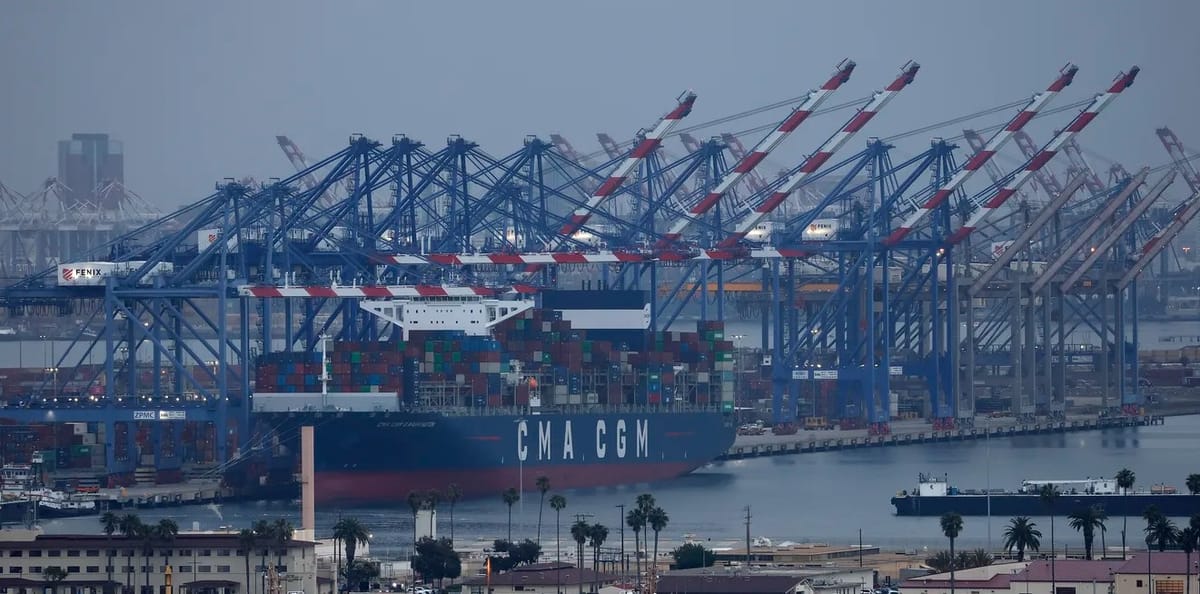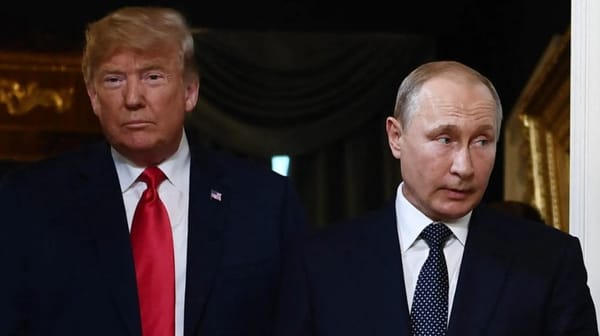OECD Slashes U.S. Growth Forecast Amid Tariff Turmoil: A Comprehensive Analysis

Introduction
The Organisation for Economic Co-operation and Development (OECD) has delivered a stark warning about the trajectory of the U.S. economy, slashing its 2025 growth forecast to 1.6%—a significant downward revision from the 2.1% projected in March 2025. This adjustment, detailed in the OECD’s June 2025 Economic Outlook report, attributes the slowdown primarily to President Donald Trump’s escalating tariff policies, which have injected unprecedented uncertainty into global trade, disrupted supply chains, and stifled business investment. The report underscores broader economic risks, including contracting U.S. manufacturing activity, inflationary pressures, and a projected budget deficit of 8% of GDP by 2026—one of the largest fiscal shortfalls among developed nations.
This report examines the OECD’s findings, the mechanisms through which tariffs are reshaping the U.S. economic landscape, and the potential long-term consequences for domestic and global markets.
Background: The OECD’s Role and Trump’s Tariff Agenda
The OECD’s Economic Mandate
The OECD, a coalition of 38 predominantly high-income nations, provides data-driven analyses to guide economic policy among member states. Its biannual Economic Outlook reports are influential benchmarks for policymakers, investors, and institutions. The June 2025 report marks one of the most pessimistic assessments of U.S. economic prospects in decades, reflecting the disruptive impact of protectionist trade measures.
Trump’s “Liberation Day” Tariffs
On April 2, 2025, President Trump announced sweeping tariffs under Executive Order 14257, dubbed “Liberation Day.” The policy imposed a baseline 10% tariff on all U.S. imports, with rates as high as 145% for Chinese goods and 25% for products from Canada and Mexico. The administration framed these measures as necessary to correct “decades of asymmetrical trade” and boost domestic manufacturing. However, the tariffs triggered immediate retaliation from trading partners, including China, the EU, and Canada, and plunged global markets into volatility[1][2][3].
The OECD’s Revised Forecast: Key Findings
U.S. Growth Downgrade
- 2025 Growth: Reduced to 1.6% (from 2.2% in March).
- 2026 Growth: Trimmed to 1.5% (from 1.6%).
- Comparative Context: The U.S. slowdown outpaces most OECD nations, with growth rates now trailing the Eurozone (1.0% in 2025) and China (4.7%)[4][5][6].
Contributing Factors
- Tariff-Driven Uncertainty: The average U.S. effective tariff rate has surged from 2.5% to 15%—the highest since World War II—disrupting supply chains and deterring business investment[7].
- Retaliatory Measures: China, Canada, and the EU have imposed tariffs on $375 billion worth of U.S. exports, eroding competitiveness in key sectors like agriculture and manufacturing[2:1][8].
- Labor Market Contraction: Net immigration has slowed by 40% since 2024, exacerbating workforce shortages in industries reliant on foreign labor[9][5:1].
- Federal Workforce Reductions: The Trump administration’s “Schedule F” initiative has eliminated 260,000 federal jobs, weakening public sector capacity to manage economic programs[5:2][7:1].
Economic Impacts of Tariffs
Manufacturing Sector Contraction
U.S. factory activity has declined for three consecutive months, with the Institute for Supply Management’s (ISM) Purchasing Managers’ Index (PMI) falling to 48.5 in May 2025 (a reading below 50 indicates contraction)[10][11][12]. Key challenges include:
- Input Shortages: Import delays and dwindling inventories have forced manufacturers to scale back production. The ISM Imports Index plummeted to 39.9 in May—the lowest since 2009[10:1][13].
- Price Inflation: Tariffs on steel, aluminum, and semiconductors have driven input costs to a 20-month high, with the ISM Prices Index at 69.4[13:1][11:1].
- Export Collapse: New export orders fell to 40.1, reflecting weakened global demand and retaliatory trade barriers[13:2][12:1].
Consumer Spending and Inflation
- Price Hikes: The OECD projects U.S. inflation will peak at 3.9% by late 2025, driven by tariff-induced import costs[9:1][4:1][7:2]. Retailers like Walmart and Target have warned of impending price increases on electronics, apparel, and household goods[14].
- Wage Stagnation: Despite a tight labor market, real wages have grown by only 0.8% annually—below the pre-tariff average of 2.1%[15][16].
Business Investment Paralysis
Uncertainty over tariff reversals and trade negotiations has frozen capital expenditure:
- Corporate Caution: CEOs across sectors report delaying expansion plans due to unpredictable trade policies. The Yale Budget Lab estimates that tariff uncertainty has reduced business investment by $150 billion since April 2025[17][7:3].
- Stock Market Volatility: The S&P 500 fell 15% following the tariff announcement, erasing $5 trillion in market value[17:1][3:1].
Fiscal and Monetary Policy Challenges
Ballooning Budget Deficit
The OECD warns that the U.S. federal deficit will exceed 8% of GDP by 2026, driven by:
- Sluggish Revenue Growth: Tariffs have failed to offset declining corporate tax receipts, which fell 12% in Q1 2025[9:2][5:3].
- Spending Pressures: The administration’s proposed fiscal package—extending Trump-era tax cuts and boosting defense spending—could add $2.3 trillion to the deficit over a decade[7:4].
- Debt Burden: Net government debt is projected to surpass 100% of GDP by 2026, raising borrowing costs and crowding out public investment[5:4][7:5].
Federal Reserve’s Dilemma
- Interest Rates: The Fed has held rates at 4.5% despite Trump’s demands for cuts, citing inflationary risks from tariffs[15:1][5:5].
- Policy Guidance: The OECD urges the Fed to maintain a “wait-and-see” approach until inflation trends clarify, with potential rate cuts of 100 basis points in 2026[9:3][5:6].
Global Repercussions
Weakened International Growth
The OECD’s global growth forecast was trimmed to 2.9% for both 2025 and 2026, with the U.S., Canada, Mexico, and China bearing the brunt of the slowdown[8:1][6:1]. Key developments include:
- China’s Retaliation: Beijing has imposed 50% tariffs on U.S. agricultural exports, crippling farmers in Midwestern states[2:2][8:2].
- EU Trade War: The bloc’s 10% tariff on American machinery has disrupted $45 billion in annual exports[1:1][6:2].
- Emerging Market Strain: Developing economies reliant on U.S. demand, such as Vietnam and Bangladesh, face recessions as export orders collapse[8:3][6:3].
Supply Chain Realignment
Companies are scrambling to diversify suppliers, but reshoring efforts remain limited:
- Nearshoring: Mexican manufacturing hubs have absorbed $30 billion in redirected U.S. investment, though labor shortages and infrastructure gaps persist[8:4][7:6].
- Strategic Stockpiling: Firms like MicroKits and FishUSA report hoarding imported components to hedge against future tariffs, straining cash flows[10:2][13:3].
Political Reactions and Policy Debates
Administration Defense
The Trump administration dismisses the OECD’s findings, arguing tariffs will ultimately strengthen U.S. industry:
- Economic Patriotism: White House advisor Peter Navarro claims tariffs are “rebuilding American manufacturing” and reducing dependency on China[17:2][3:2].
- Fiscal Optimism: Treasury Secretary Steven Mnuchin highlights $175 billion in projected savings from federal workforce reductions, though independent analysts contest this figure[9:4][7:7].
Democratic Criticism
Congressional Democrats have condemned the tariffs as economically reckless:
- House Report: A June 2025 Appropriations Committee analysis reveals $425 billion in congressionally approved funds remain blocked by the administration, harming disaster relief and healthcare programs[9:5][16:1].
- Legal Challenges: Twelve states are suing to overturn the tariffs, arguing they violate the Constitution’s Commerce Clause[1:2][3:3].
International Diplomacy
- WTO Disputes: The EU and Canada have filed complaints with the World Trade Organization, alleging U.S. tariffs breach international law[2:3][8:5].
- Alliance Strain: NATO allies criticize the administration’s “America First” trade agenda, warning it undermines collective security frameworks[6:4][7:8].
Conclusion: Navigating a Fractured Economic Landscape
The OECD’s revised forecast underscores the profound risks of Trump’s tariff-centered trade policy. While the administration frames these measures as necessary to rebalance global commerce, the immediate consequences—slower growth, inflationary pressures, and manufacturing decline—paint a grim picture for the U.S. economy. The projected 8% budget deficit by 2026 further complicates the fiscal outlook, limiting the government’s capacity to respond to future crises.
Pathways Forward
- Tariff Rollbacks: Negotiating bilateral agreements to reduce tariffs with the EU and Canada could restore $200 billion in annual trade[8:6][6:5].
- Investment in Automation: Accelerating AI and robotics adoption may offset labor shortages but risks exacerbating unemployment[17:3][7:9].
- Fiscal Reform: A bipartisan deficit reduction package, combining targeted spending cuts and tax reforms, could stabilize debt levels[9:6][5:7].
As the U.S. approaches the 2026 sunset of the “Liberation Day” tariffs, policymakers face a critical choice: double down on protectionism or recalibrate toward a more predictable, cooperative trade regime. The OECD’s warning serves as a timely reminder that economic resilience hinges not on isolation, but on strategic engagement with a interconnected world.
https://www.axios.com/2025/06/03/trump-tariffs-growth-oecd ↩︎ ↩︎ ↩︎
https://www.cnn.com/2025/06/03/economy/oecd-economic-downgrade-trump-tariffs-intl ↩︎ ↩︎ ↩︎ ↩︎
https://www.usnews.com/news/economy/articles/2025-06-03/oecd-further-cuts-u-s-growth-forecast-amid-tariff-turmoil ↩︎ ↩︎ ↩︎ ↩︎
https://abcnews.go.com/Business/us-economic-outlook-slashed-oecd-trumps-tariffs-upend/story?id=122443152 ↩︎ ↩︎
https://www.oecd.org/en/publications/2025/06/oecd-economic-outlook-volume-2025-issue-1_1fd979a8/full-report/united-states_c69a8d2f.html ↩︎ ↩︎ ↩︎ ↩︎ ↩︎ ↩︎ ↩︎ ↩︎
https://www.oecd.org/en/about/news/press-releases/2025/06/global-economic-outlook-shifts-as-trade-policy-uncertainty-weakens-growth.html ↩︎ ↩︎ ↩︎ ↩︎ ↩︎ ↩︎
https://www.foxbusiness.com/economy/us-economic-growth-forecast-cut-sharply-oecd-due-higher-tariffs ↩︎ ↩︎ ↩︎ ↩︎ ↩︎ ↩︎ ↩︎ ↩︎ ↩︎ ↩︎
https://ici.radio-canada.ca/rci/en/news/2169470/canadian-economy-will-be-among-those-hit-hardest-by-global-slowdown-says-oecd ↩︎ ↩︎ ↩︎ ↩︎ ↩︎ ↩︎ ↩︎
https://www.proactiveinvestors.com/companies/news/1072317/us-growth-forecasts-cut-by-oecd-due-to-tariffs-policy-uncertainty-and-reduced-immigration-1072317.html ↩︎ ↩︎ ↩︎ ↩︎ ↩︎ ↩︎ ↩︎
https://www.manufacturingdive.com/news/ism-s-and-p-pmi-may-2025-trump-tariffs/749549/ ↩︎ ↩︎ ↩︎
https://www.advisorperspectives.com/dshort/updates/2025/06/02/ism-manufacturing-pmi-contracts-may-2025?topic=covid-19-coronavirus-coverage ↩︎ ↩︎
https://tradingeconomics.com/united-states/business-confidence ↩︎ ↩︎
https://www.monitordaily.com/news-posts/u-s-manufacturing-contracts-in-may-as-orders-and-output-continue-to-shrink/ ↩︎ ↩︎ ↩︎ ↩︎
https://abcnews.go.com/Business/consumer-confidence-brightens-trump-rolls-back-tariffs/story?id=122221209 ↩︎
https://www.usnews.com/news/economy/articles/2025-06-02/jobs-report-could-be-early-sign-of-tariffs-cost ↩︎ ↩︎
https://www.aol.com/news/us-job-openings-rebound-april-142741800.html ↩︎ ↩︎
https://insights.som.yale.edu/insights/the-trump-tariffs-are-paralyzing-business-investment ↩︎ ↩︎ ↩︎ ↩︎




